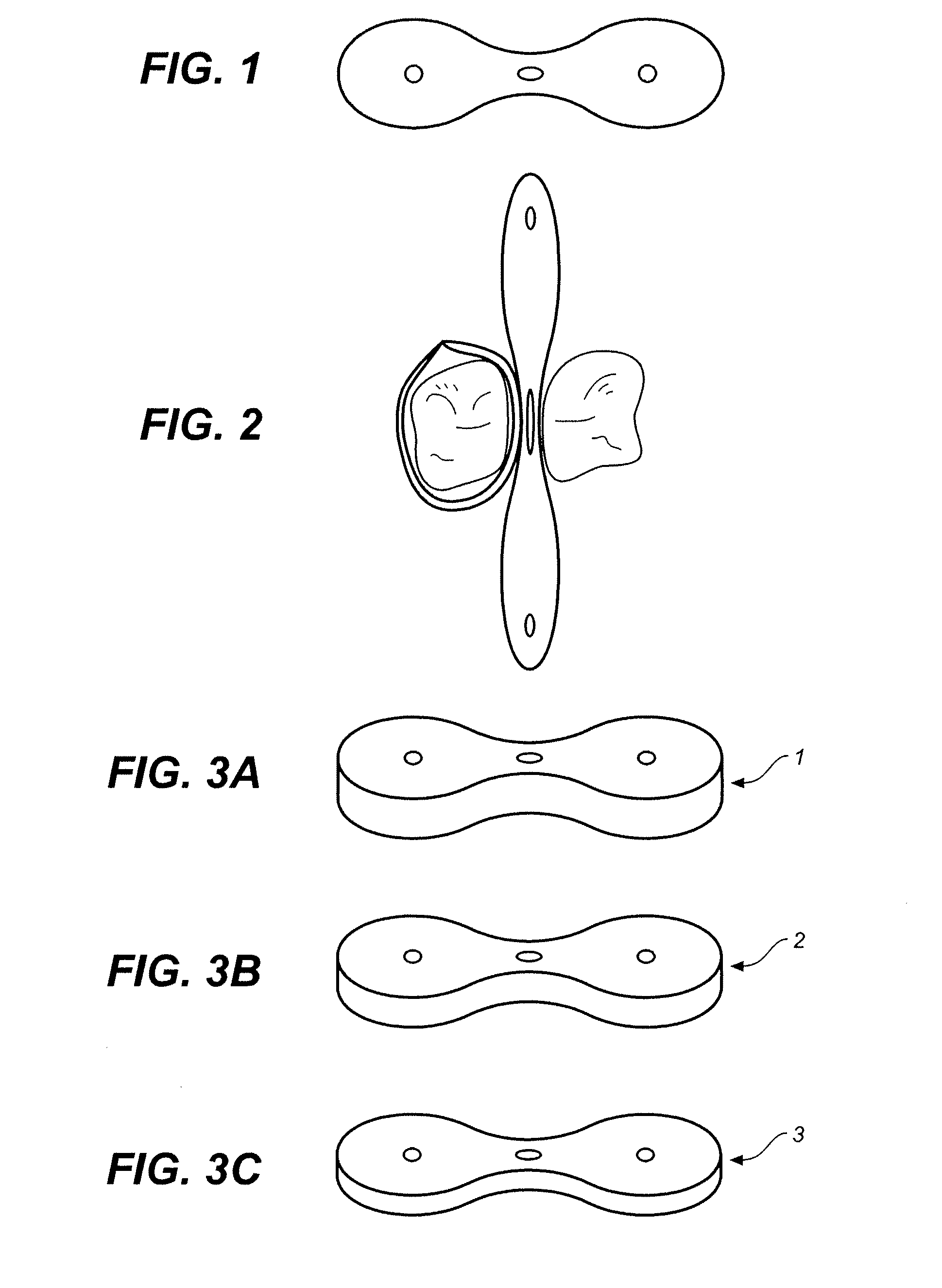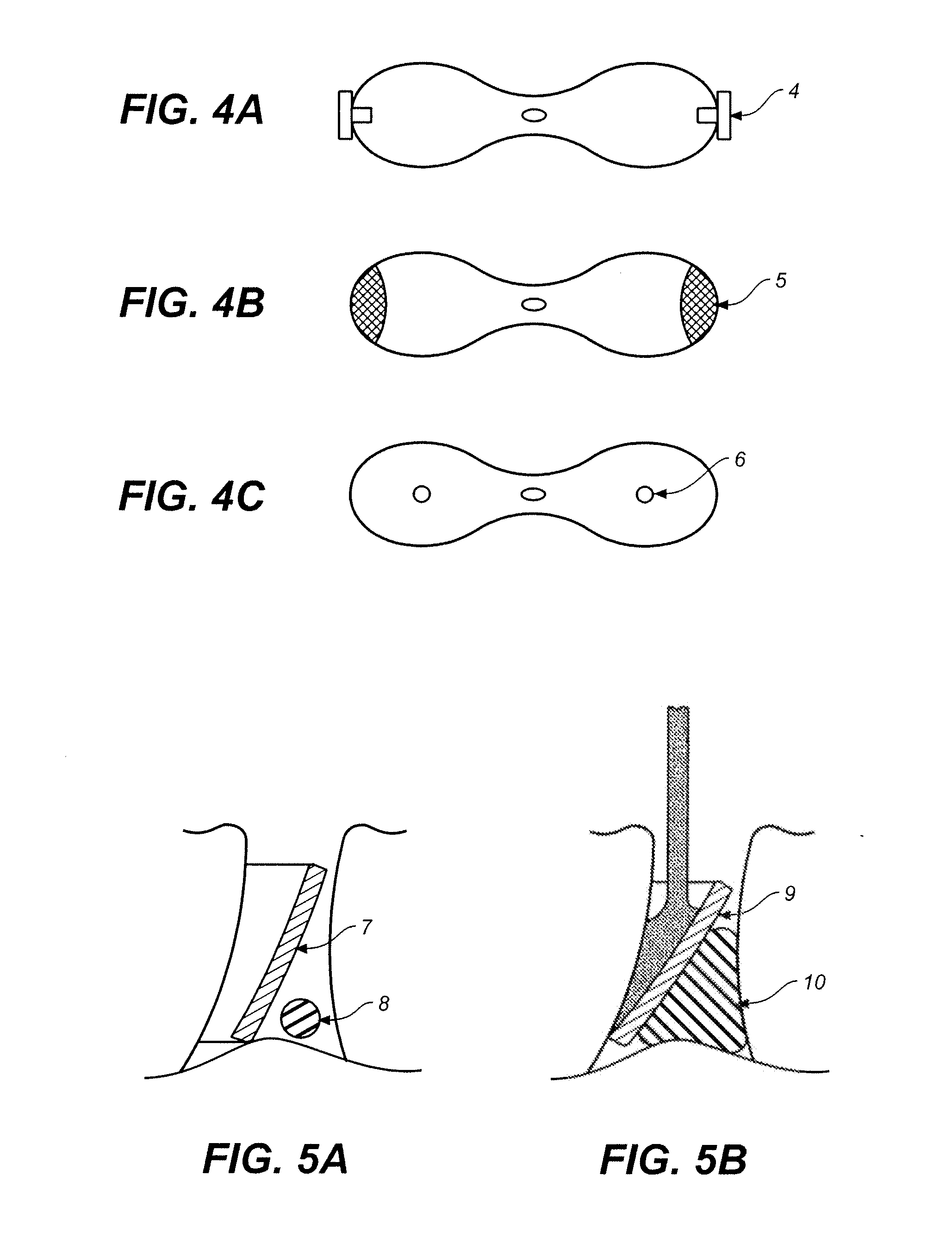Elastic dental device
a dental device and elastic technology, applied in the field of dental tools, can solve the problems of not being able to adapt well to the variable contours of the interproximal space, affecting the use of the wedge in the first place, and rigid, fixed-shape wedges or wedge-type devices. achieve the effect of convenient insertion and removal
- Summary
- Abstract
- Description
- Claims
- Application Information
AI Technical Summary
Benefits of technology
Problems solved by technology
Method used
Image
Examples
Embodiment Construction
Overview
[0021]The invention provides an elastic dental wedge that provides uniform support to a matrix band or cavity filling material mold in dental treatment procedures. The methods of using this elastic dental wedge are easy to operate and the unique design of the dental wedge offers easy insertion and removal.
Definitions
[0022]“Discontinuity” as used herein refers to a break in the continuity of a material. In reference to a discontinuity in the central portion of an elastic dental wedge, discontinuity comprises decreased amount of elastic material in a cross-section of the central portion containing the discontinuity relative to a section adjacent to the discontinuity. Examples of a discontinuity include, but are not limited to, a hole, a notch, and a groove.
[0023]“Grip” as used herein refers to a handle, which comprises a physical change in the shape, texture or an attachment means that can be easily engaged by a tool or by hands. Examples of a grip include, but are not limited...
PUM
 Login to View More
Login to View More Abstract
Description
Claims
Application Information
 Login to View More
Login to View More - R&D
- Intellectual Property
- Life Sciences
- Materials
- Tech Scout
- Unparalleled Data Quality
- Higher Quality Content
- 60% Fewer Hallucinations
Browse by: Latest US Patents, China's latest patents, Technical Efficacy Thesaurus, Application Domain, Technology Topic, Popular Technical Reports.
© 2025 PatSnap. All rights reserved.Legal|Privacy policy|Modern Slavery Act Transparency Statement|Sitemap|About US| Contact US: help@patsnap.com



